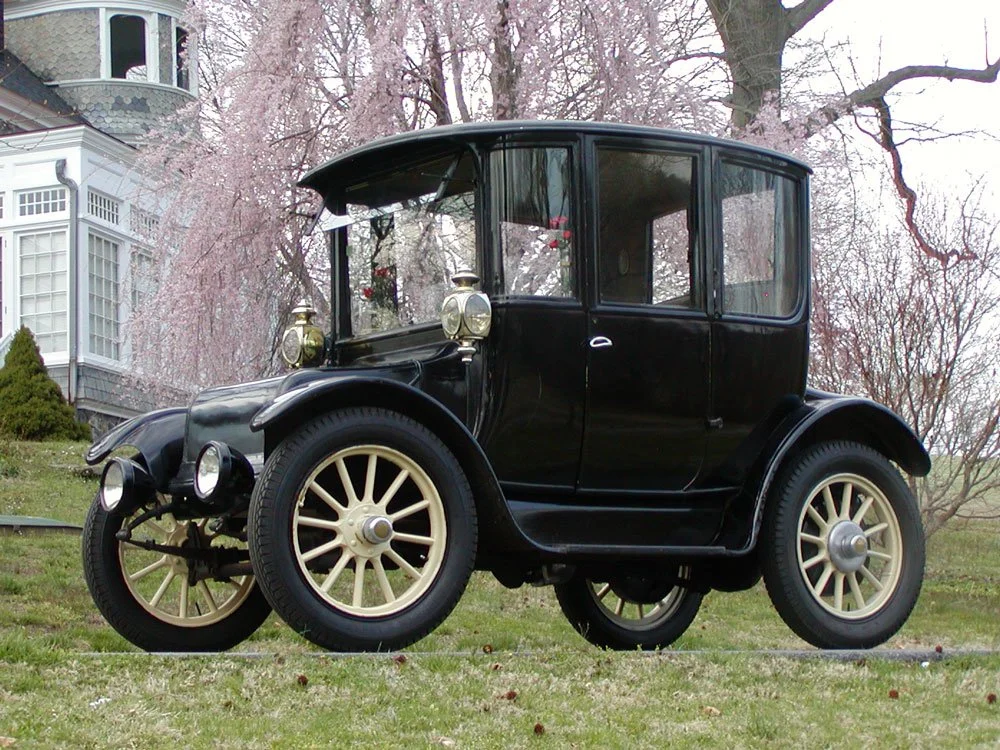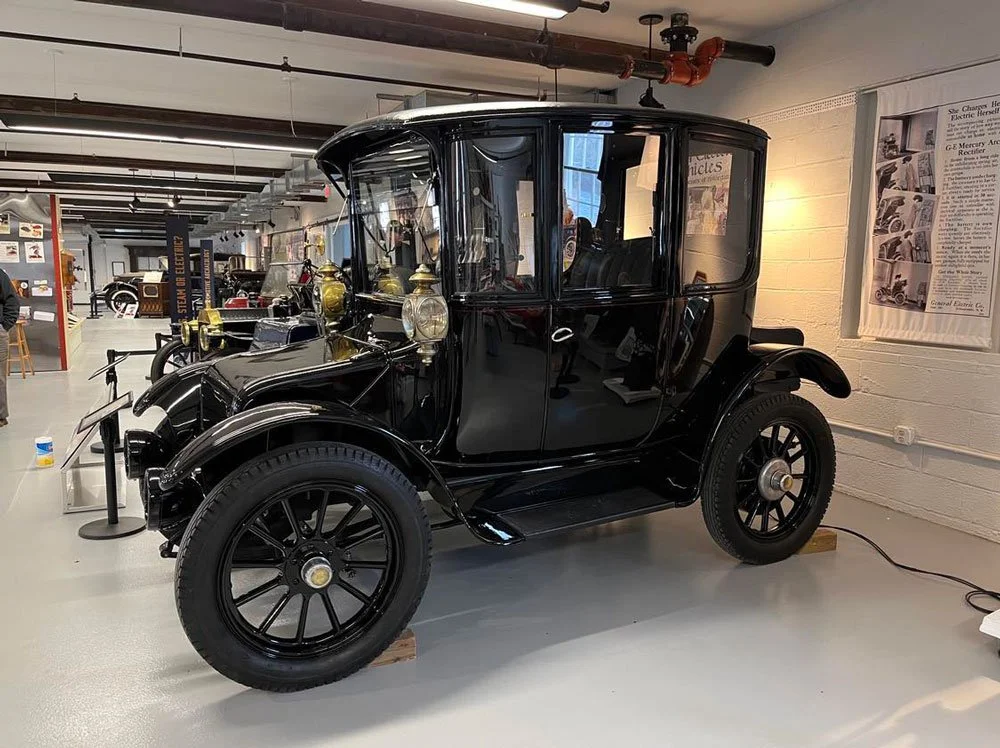Painting the Rauch & Lang | Car Portrait
Tis again the season for another car portrait for the Auburn Heights Invitational Classic Car Show & Garden Party coming up this September in Yorklyn, Delaware at the Marshall Steam Museum. Contrary to my normal working style, I knew that my late summer and early fall was going to be filled with travel so I wanted to get started on this project sooner rather than later. For this year’s show, I was asked to paint the museum’s 1916 Rauch & Lang Electric Brougham. I cannot say that I have a favorite car from my time working at the museum, but I certainly have many fond memories of this electric car.
Since the museum’s collection is almost exclusively steam cars, which can take up the better part of an hour to steam up to be ready to drive, they are not necessarily the car you are going to run to for a spontaneous ride or lesson. The electric car, on the other hand, is much easier to start, though the range is quite limited on one charge. This is the only car in the collection that I was brave enough to take a driving lesson in while I was at Auburn Heights, but even that was only a time or two and we kept it to the paved path that meanders behind the estate.
Pre-restoration
Post-restoration
To write this blog post, I couldn’t help but go down the rabbit hole of the history of electric cars and the story of the museum’s Rauch and Lang. Once upon a time, I could probably recite the story in my sleep, but it’s been a while. Of course you can read full details on the Rauch & Lang’s dedicated page, but here are some excerpts. (You really should go to the full page though to see the original advertisements associated with the car.)
Early electric cars boasted a top speed of 20–25 MPH and a range of only about 30 miles before needing to be recharged. While the cars were heavy and tiller steering was difficult, electric cars were frequently driven by women due to the ease of starting and absence of either a gasoline or steam engine to maintain. Purchased about 1950 by Clarence Marshall from Spencer Sharpless of Wayne, Pennsylvania, this car had been in storage. A mercury-vapor type charger came with the car, but the vapor bulb had lost its vacuum, and attempts to charge the batteries were unsuccessful. The car stood as a static exhibit in the museum until late 2001, when members of the Marshall Steam Team took on the task of making it run again. Marshall Steam Museum Website
One of the details that I find the most interesting about this car is the interior. At the rear of the car there is a bench seat that can fit the driver and one to two other people depending on their size. Opposite the driver there are two seats in the corners that face the driver towards the interior of the car, essentially with the passengers’ backs to the car’s front windshield. There are also curtains on the windows and bud vases on either side of the car complete the sophisticated interior. The goal was almost to create a parlor vibe inside the car. If you want to see what I’m talking about, watch this short video by none other than the museum’s founder Tom Marshall.
But enough about the car’s history, you want to know about the painting. Susan Randolph, the museum’s Executive Director, asked me to paint the Rauch & Lang for the 2024 show because the car has finally undergone a full restoration, something that was in the works before I started at the museum and long after I left. In its fully restored state, the car has a brand new paint job that includes restoring the wheels to black, new upholstery, and a classy red pinstripe.
With any car portrait, the most challenging part for me is to come up with a workable outline. With a simple reference photo I can often place my watercolor paper on top of the reference photo and use my light table to capture the basic shapes, but I do not find this technique to be successful with historic car references. You want an outline to be detailed enough to convey the complexity of the car, but you also do not want the viewer to get lost in the car’s mechanical details. As much as you want the painting to be accurate, it is still an artist's rendering, not a photograph. For the first time, which is kind of crazy, I decided to use tracing paper and my light table instead of regular old computer paper. This simple adjustment made a huge difference in the quality of my final outline. I made the first draft of my outline in pencil and finalized the lines with a fine liner. To transfer my outline to my watercolor paper, I decided to again use my light table. Since historic cars have so many small details, these can become lost if you try to use graphite paper on the rough cold press (rough) watercolor paper that I like to use. It may seem like a lot of steps before even getting to the painting, but it is worth it.
I knew that the hardest part of this painting was going to be all of the black: black tires, black wheels, black paint, gray interior. What I try to keep in mind when I am working on a subject that is completely black is that there are actually lots of different colors that our brain interprets as black. When looking at a photograph of this car, I see a full range of grays, blues, and purples. There are also shades of black that appear matt as opposed to shiny. I decided that I wanted to have two distinct blacks:
one that I would use for the wheels and the car’s gray upholstered interior that you can see through the windows
one that had shades of purple and blue in it.
Enjoying this read? Sign up for my newsletter and never miss a post, freebie, and more!
For the car’s wheel’s I used Winsor & Newton’s Ivory Black essentially the way it came out of the tube. This is a nice black color that has brown undertones. For the rest of the car, I mixed a custom black that tinted towards blue using Winsor and Newton Ultramarine and Burnt Sienna, which makes a really beautiful gray color. If I needed a darker version, I either added more pigment or did an underlayer of Winsor and Newton Indigo to darken up the color.
The most fun details for me included working on the interior, which is such an iconic part of this car, but hard to see from the outside. If you are not familiar with the car, you might not even notice, but I wanted to make sure that the tiller for steering was visible, that you can see the seat that is opposite the driver, and of course the bud vases with bright red flowers to complement the red pinstriping.
Overall this was a challenging painting and I hope that it meets the expectations of all of the volunteers’ who get to see this car in its newly restored state on the regular. Do you have any favorite details?







